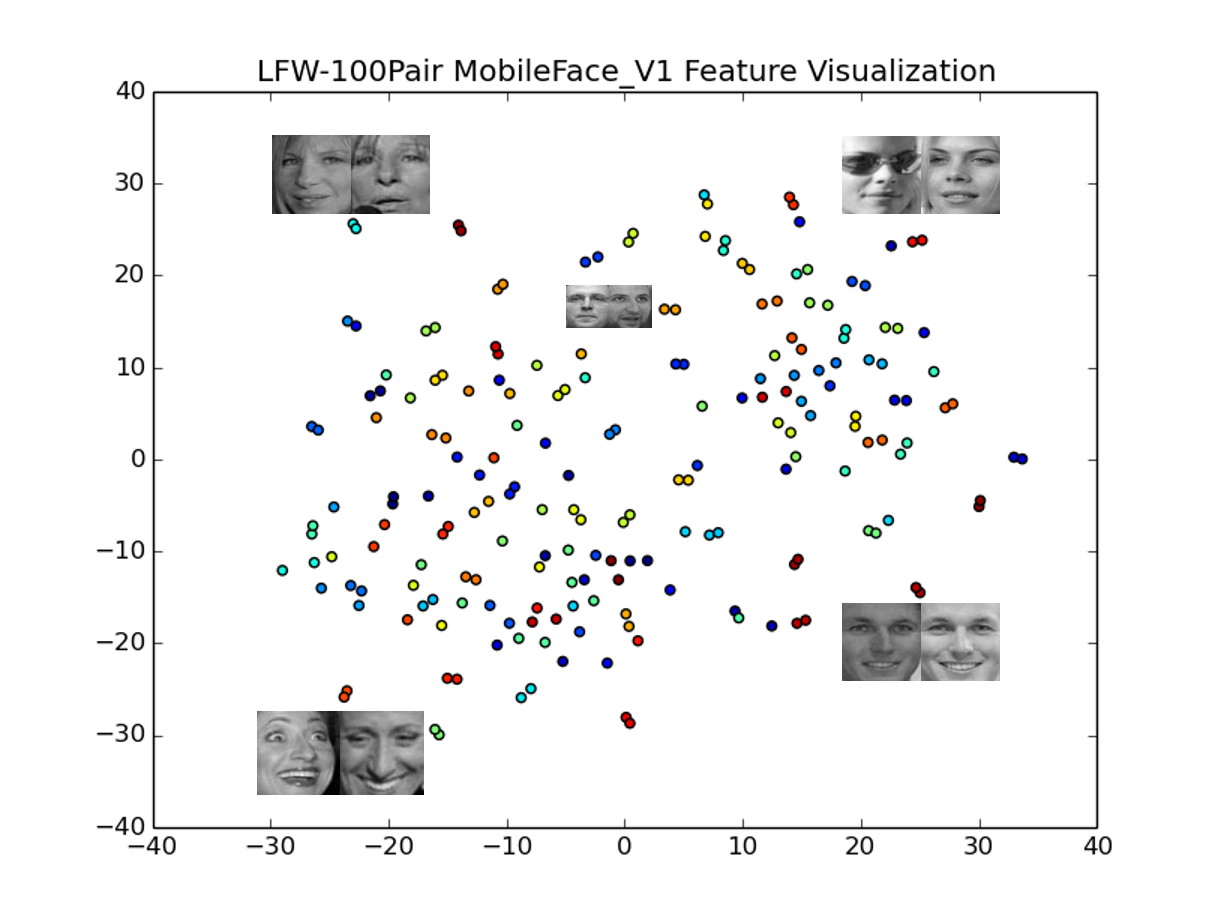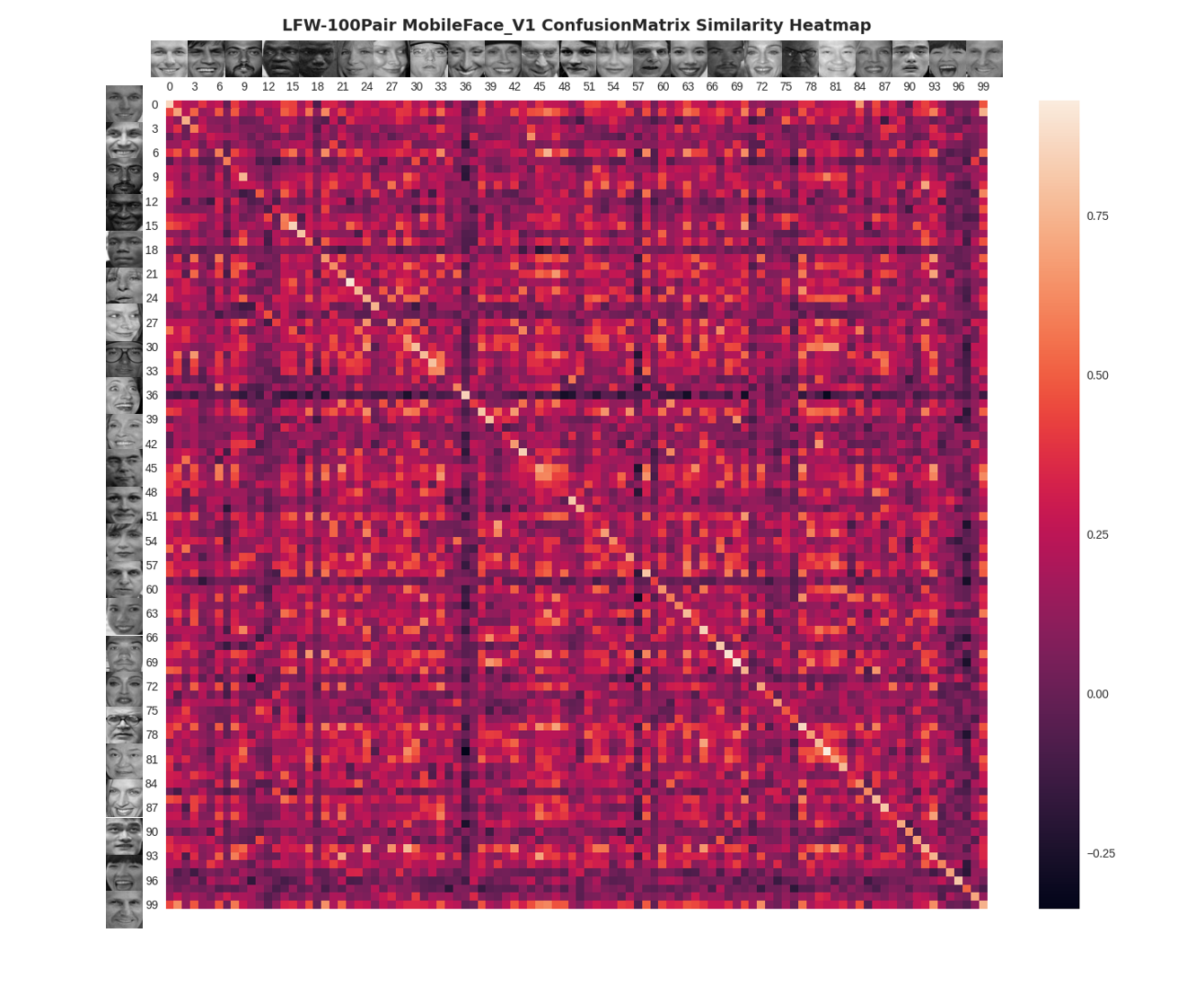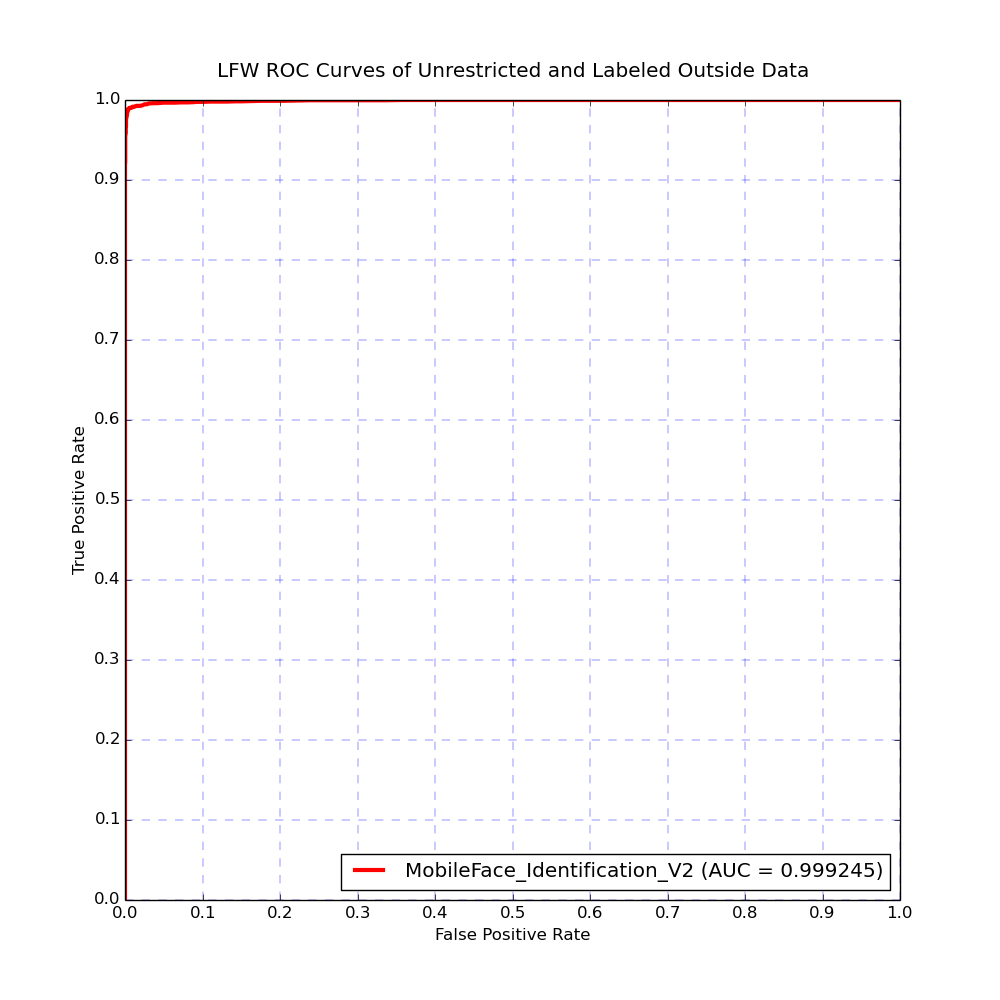A face recognition solution on mobile device.
| Model | Framework | Size | CPU | LFW | Target |
|---|---|---|---|---|---|
| MobileFace_Identification_V1 | MXNet | 3.40M | 8.5ms | - | Actual Scene |
| MobileFace_Identification_V2 | MXNet | 3.41M | 9ms | 99.653% | Benchmark |
| 🌟MobileFace_Identification_V3 | MXNet | 2.10M | 💥3ms(sota) | 95.466%(baseline) | Benchmark |
To get fast face feature embedding with MXNet as follow:
cd example
python get_face_feature_mxnet.pyI used the t-SNE algorithm to visualize in two dimensions the 256-dimensional embedding space. Every color corresponds to a different person(but colors are reused): as you can see, the MobileFace has learned to group those pictures quite tightly. (the distances between clusters are meaningless when using the t-SNE algorithm)

To get the t-SNE feature visualization above as follow:
cd tool/tSNE
python face2feature.py # get features and lables and save them to txt
python tSNE_feature_visualization.py # load the txt to visualize face feature in 2D with tSNEI used the ConfusionMatrix to visualize the 256-dimensional feature similarity heatmap of the LFW-Aligned-100Pair: as you can see, the MobileFace has learned to get higher similarity when calculating the same person's different two face photos. Although the performance of the V1 version is not particularly stunning on LFW Dataset, it does not mean that it does not apply to the actual scene.

To get the ConfusionMatrix feature similarity heatmap visualization above as follow:
cd tool/ConfusionMatrix
python ConfusionMatrix_similarity_visualization.pyTo get inference time of different version's MXNet models as follow:
cd tool/time
python inference_time_evaluation_mxnet.py --symbol_version=V3 # default = V1Prune the MXNet model through deleting the needless layers (such as classify layer and loss layer) and only retaining features layers to decrease the model size for inference as follow:
cd tool/prune
python model_prune_mxnet.pyThe LFW test dataset (aligned by MTCNN and cropped to 112x112) can be download from GoogleDrive or BaiduDrive, and then put it (named lfw.bin) in the directory of data/LFW-bin.
To get the LFW comparison result and plot the ROC curves as follow:
cd benchmark/LFW
python lfw_comparison_and_plot_roc.py- MobileFace_Identification
- MobileFace_Detection
- MobileFace_Landmark
- MobileFace_Align
- MobileFace_Attribute
- MobileFace_Pose
- MobileFace_NCNN
- MobileFace_FeatherCNN
- Benchmark_LFW
- Benchmark_MegaFace
Coming Soon!
